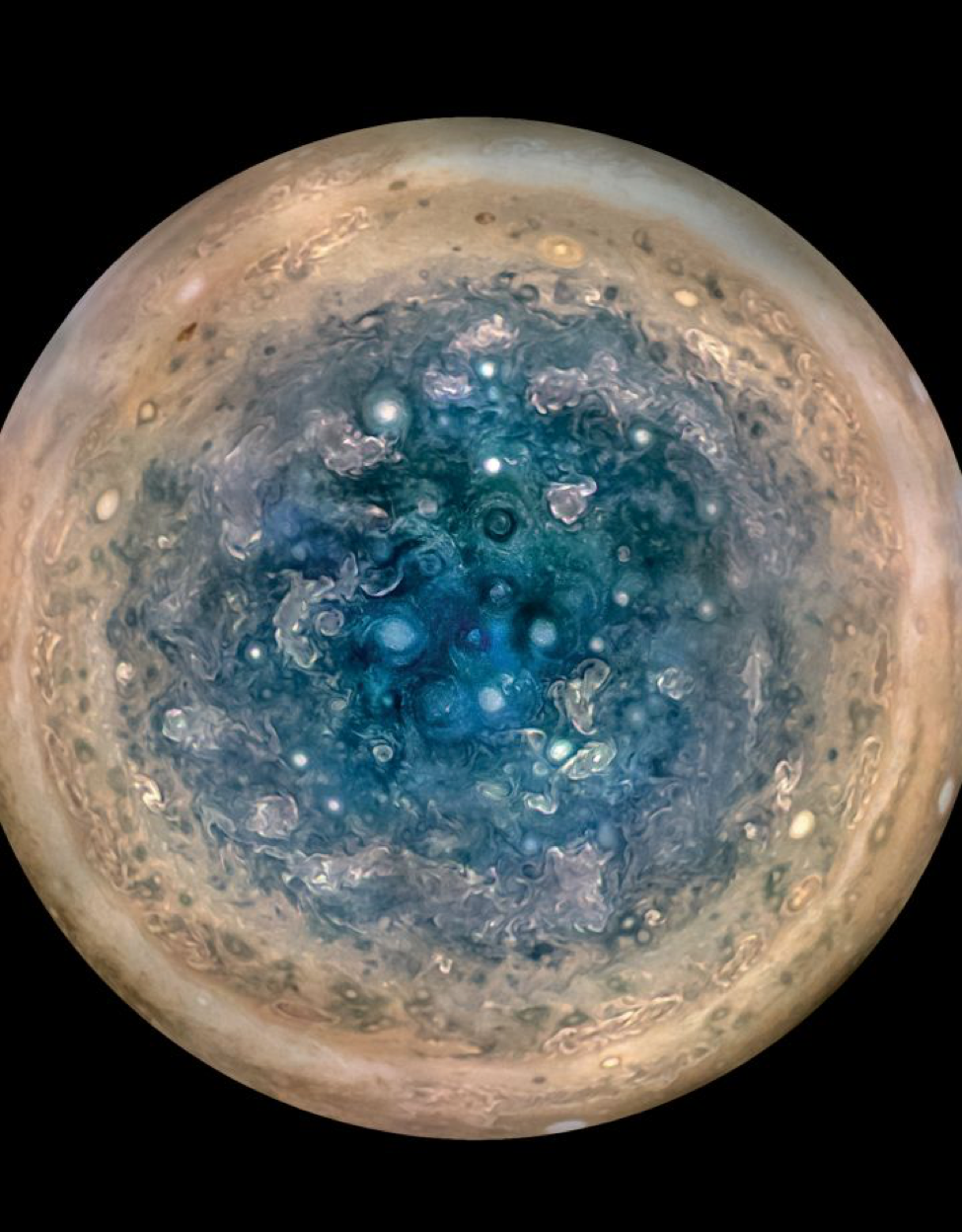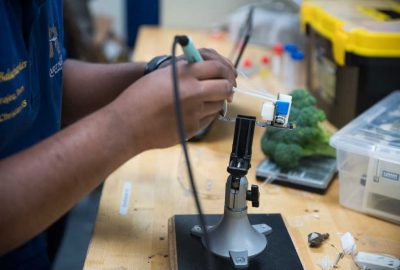If someone ever tells you that scientists don’t have a sense of humor, tell them this story. Last summer, NASA launched the probe Juno to study the largest planet in our solar system: Jupiter. In Roman mythology, the head god is named Jupiter. Like his Greek counterpart, Zeus, he has lots of affairs with women. Several of Jupiter’s moons are named after these mistresses. In that same mythology, however, Jupiter is married to Juno. So, NASA sent Juno, his wife, to check up on Jupiter and his many mistresses. After having waited 400 years to make that joke, NASA saw the opportunity, and they took it.
In all seriousness though, scientists are just now beginning to publish their initial results from Juno about Jupiter, and they are fascinating. Juno is the closest man-made object to get to Jupiter (and any other planet besides Earth).
Here are three of the biggest discoveries we’ve made so far about the gas giant:
- Unlike the other gas giant NASA is currently studying, Saturn, Jupiter’s north pole is chaotic. It has large storms that reach for miles across the planet. One storm stretched longer than 870 miles across. That’s longer than the distance between New York and Chicago! Can you imagine a storm that big on Earth? I can’t!
- Jupiter may not have a core in the way Earth has a core. Scientists have long believed that at the center of planets lay a small ball of heavy elements that was easy to identify as the core. However, after Juno, scientists are beginning to suspect that the “mass may be spread out” according to NASA astrophysicist Jack Connerney. This is revolutionary in the way people think about planets and will no doubt change the way we approach studying other gas giants in the future as well!
- Perhaps unsurprisingly, Jupiter’s magnetic field is ten times stronger than Earth’s magnetic field. This isn’t that surprising, at least to me, since the gas giant is so much larger than our planet. However, Juno also discovered that the dynamo might be visible. A dynamo, or the force that causes each planet to have a magnetic field, has often left scientists perplexed about how they form. Earth’s own dynamo is not visible on Earth, leaving us pretty much in the dark when it comes to that. However, Juno’s early results are showing that she is getting close to the dynamo and that it is relatively close the surface. NASA is hopeful that they will get a clearer picture of Jupiter’s dynamo with each of Juno’s orbits.
Of course, this list barely scratches the surface about all of the information that Juno has relayed back to Earth. To find out more you check out this article from Pop Science, which inspired this article. You can also go to NASA’s page for the Juno mission to stay up to date with the latest findings and see the latest pictures of the gas giant from Juno herself.

Written by Staff Writer Becca Brunner
Becca is a recent college graduate who lives in Tampa, Florida. From a young age, she has been fascinated by the stars and how beautiful the universe is. When she’s not writing for our blog, she can be found reading the latest YA novel, catching up on Dr. Who, or just hanging out with friends in coffee shops.
Photo Credit: NASA/JPL-Caltech/SwRI/MSSS/Betsy Asher Hall/Gervasio Robles









